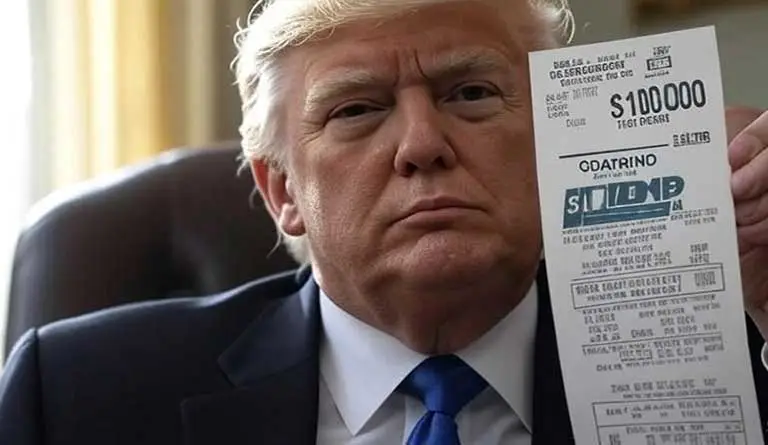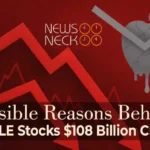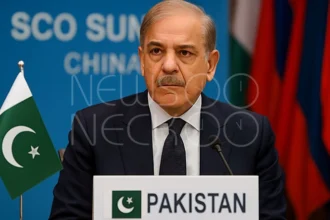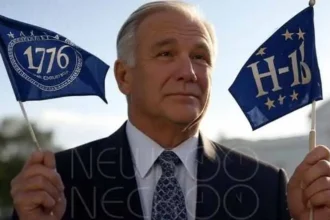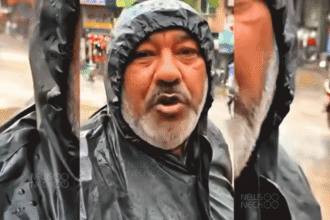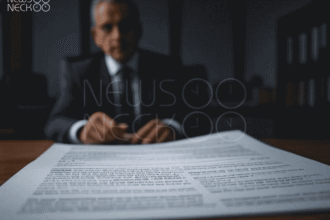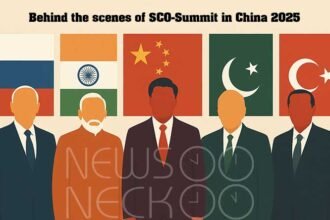New American Policies Create Global Economic Ripples
In a one-two punch to the global economic landscape, the Trump administration has implemented aggressive new trade tariffs and dramatically increased the cost of H-1B visas for skilled foreign workers. Economists and business leaders are warning that these measures, aimed at protecting American interests, threaten to stifle U.S. economic growth, disrupt international supply chains, and force a fundamental restructuring of India’s massive IT sector .
The policies have ignited market volatility and created significant headwinds for global trade. While the administration argues the moves will boost American manufacturing and jobs, critics see a recipe for higher prices, chronic uncertainty, and a potential “brain drain” that could undermine U.S. productivity and its competitive edge in technology .
A Patchwork of Tariffs: Reshaping International Trade
President Trump’s tariff strategy involves a complex web of import taxes on goods from countries around the world. The approach began with a 10% “baseline” tariff on imports from all nations, with higher rates imposed on what the administration deems “worst offenders” .
The average U.S. tariff rate has skyrocketed from less than 2.5% at the start of 2025 to more than 18%, according to analysts, marking the highest rate in decades . The following table outlines the new tariff rates for key U.S. trading partners, as of recent announcements:
| Country | New Tariff Rate | Key Context & Negotiations |
|---|---|---|
| China | Truce extended until Nov 2025 | Threat of tariffs >100% remains paused for further talks |
| Canada | 35% | Negotiations ongoing; retaliatory tariffs were dropped by Canada |
| Mexico | Reprieve until end-Oct 2025 | Facing potential tariffs of 30% or more |
| Brazil | 50% | Announced due to an “unfair” trading relationship |
| India | 50% | Includes a 25% penalty for trade with Russia |
| European Union | 15% | A framework deal reduced the initially threatened higher rate |
| United Kingdom | 10% | The lowest rate negotiated so far; specific quotas on cars and beef |
| South Korea | 15% | Effective tariff rate estimated at 13.5% with exemptions |
The administration’s stated goal is to reduce the U.S. trade deficit and encourage consumers to buy American-made goods . However, the International Monetary Fund (IMF) has already adjusted its global growth forecasts downward, predicting that these tariffs will lead to uncertainty and slower economic expansion worldwide .
The H-1B Visa Overhaul: A $100,000 Barrier to Talent
Separate from trade measures, a recent presidential proclamation has shaken the technology and outsourcing industries by imposing a $100,000 fee on new H-1B visa applications—a staggering increase from the previous cost of $1,700 to $4,500 .
The H-1B program is a non-immigrant visa that allows U.S. companies to employ graduate-level workers in specialized fields such as technology, engineering, and medicine. The administration contends the program has been “deliberately exploited” to replace American workers with lower-paid labor, thereby suppressing wages and harming national security . The new fee is designed to encourage companies to hire American workers and ensure that only the “top, top people” are sponsored for visas .
Immediate Fallout and White House Clarification
The announcement triggered immediate panic and confusion. Over the weekend of September 21-22, 2025, Silicon Valley firms advised H-1B employees against international travel, fearing they would not be able to re-enter the U.S. under the new rules . This prompted a swift clarification from the White House, which stated that the fee is a one-time payment applied only to new applicants, not to existing visa holders or renewals .
Economic Impact: Warnings of Slower Growth and Brain Drain
Economists have been quick to sound the alarm on the potential economic consequences of the visa fee hike. Atakan Bakiskan of Berenberg investment bank labeled the move an example of “anti-growth policymaking” . He warns that by making it prohibitively expensive to attract foreign talent, the U.S. risks a “brain drain” that will weigh heavily on productivity .
“Investments in artificial intelligence are unlikely to offset the damage caused by the loss of human capital under restrictive immigration policies,” Bakiskan stated. Berenberg has already lowered its U.S. growth forecast for 2025 from 2% to 1.5%, warning that this estimate “may soon look optimistic” if the policies remain .
The impact is also being felt by U.S. consumers. Companies like Target, Walmart, and Adidas have warned about impending price rises as a result of the tariffs . While overall inflation has remained relatively muted so far, experts anticipate further price increases in the coming months as businesses fully adjust to the higher costs .
India’s IT Sector Grapples with an Existential Challenge
The new policies hit particularly hard in India, whose nationals received 71% of all H-1B visas approved last year . The country’s $245 billion IT sector, which relies heavily on sending engineers and consultants to work on-site at U.S. client locations, is facing a direct threat to its traditional business model .
The initial reaction was felt on the stock market, with shares of major Indian IT firms like Infosys, Tata Consultancy Services (TCS), and Wipro falling by up to 3% . Analysts at Citi Research noted that the increased cost may not be entirely passed to customers, thereby squeezing profit margins for these companies .
A Forced Evolution for Indian IT
In response, the sector is expected to undergo a significant transformation. Companies are likely to accelerate the shift away from sending workers to the U.S. and instead expand “global capability centers” within India and near-shore centers in countries like Mexico or Canada . Mohandas Pai, an Infosys veteran, predicts the fee will “accelerate offshore delivery,” ultimately benefiting India’s domestic IT ecosystem .
For individual Indian professionals and students, the announcement has created profound anxiety, disrupting career plans and American dreams built over years . However, some industry leaders see a silver lining. Kunal Bahl, co-founder of Snapdeal, anticipates a “reverse migration” of talent that will boost innovation within India, saying, “There is something much bigger & better in store for you” .
A New Era of Economic Nationalism
The combined effect of sweeping tariffs and restrictive visa policies marks a bold shift toward economic nationalism. While the Trump administration frames these actions as necessary to correct unfair trade practices and protect American jobs, the immediate aftermath has been characterized by market nervousness, warnings of slower growth, and significant disruption to global industries.
The long-term consequences remain uncertain. While the U.S. may see a short-term boost in government revenue from tariffs and visa fees, the potential erosion of its talent advantage and the strain on international trade partnerships could have lasting effects on its economic leadership. Meanwhile, India’s IT sector, though facing immediate pain, may be pushed to innovate and strengthen its own domestic capabilities. The world is now watching to see if these policies create the promised protection for American workers or end up undermining the very growth they seek to secure.
Of course! Here are some Frequently Asked Questions (FAQs) designed to complement the news article, enhance its SEO value, and address common reader queries.
Frequently Asked Questions (FAQs)
Q1: Who exactly has to pay the new $100,000 H-1B visa fee?
The fee is a one-time payment applied to new applicants for the H-1B visa. According to the White House clarification, it does not apply to existing H-1B visa holders seeking a renewal (extension) with the same employer or those transferring their visa to a new employer. The fee is paid by the sponsoring U.S. company, not the employee.
Q2: How do the new U.S. tariffs affect the average American consumer?
Major retailers like Target and Walmart have already warned of impending price increases. Tariffs are essentially a tax on imports, and the cost is often passed down the supply chain, ultimately leading to higher prices for consumers on a wide range of goods, from electronics and clothing to automobiles and home goods. While the full effect may take months to materialize, economists expect it to contribute to inflation.
Q3: Why is India’s IT sector so specifically impacted by the H-1B visa change?
Indian nationals received approximately 71% of all H-1B visas approved in the last fiscal year. The traditional business model for many large Indian IT services firms relies on sending engineers and consultants to work on-site at client locations in the U.S. The massive fee increase makes this model significantly less profitable and could deter U.S. companies from hiring them due to the increased cost.
Q4: Are there any exemptions to the new tariff rates?
Yes, the policy is complex and includes negotiated exemptions. For example, the United Kingdom secured a lower rate (10%) with specific quotas on items like cars and beef. South Korea also has exemptions that lower its effective tariff rate. The administration has also granted temporary reprieves to countries like Mexico to allow for further negotiations.
Q5: What is the “brain drain” that economists are warning about?
A “brain drain” refers to the emigration of highly skilled or professional people from a country. In this context, economists are warning of a reverse brain drain for the United States. By making it extremely difficult and expensive to attract top global talent in fields like technology and engineering, the U.S. risks losing its competitive advantage and seeing innovation shift to other countries that welcome skilled immigrants.
Q6: How are Indian IT companies likely to adapt to these changes?
Analysts predict a forced evolution. Companies will likely accelerate their shift away from on-site work in the U.S. and invest heavily in:
- Global Capability Centers (GCCs): Expanding large delivery centers within India.
- Near-shoring: Setting up offices in countries like Mexico and Canada to serve U.S. clients in similar time zones without the high visa costs.
- Automation and AI: Increasing investments in automation to reduce reliance on human labor for certain tasks.
Q7: What is the stated goal of the Trump administration behind these policies?
The administration’s primary stated goals are to:
Strengthen National Security: The administration argues that relying on foreign workers and imports can pose a risk to the nation’s economic and physical security.
Protect American Jobs: By making it more expensive to hire foreign workers and import foreign goods, they aim to incentivize companies to “Hire American” and “Buy American.”
Correct Trade Imbalances: The tariffs are specifically aimed at reducing the U.S. trade deficit with other nations.
Author: Junaid Arif
Date: 23, Sept 2025
For More Updates, Visit Newsneck

